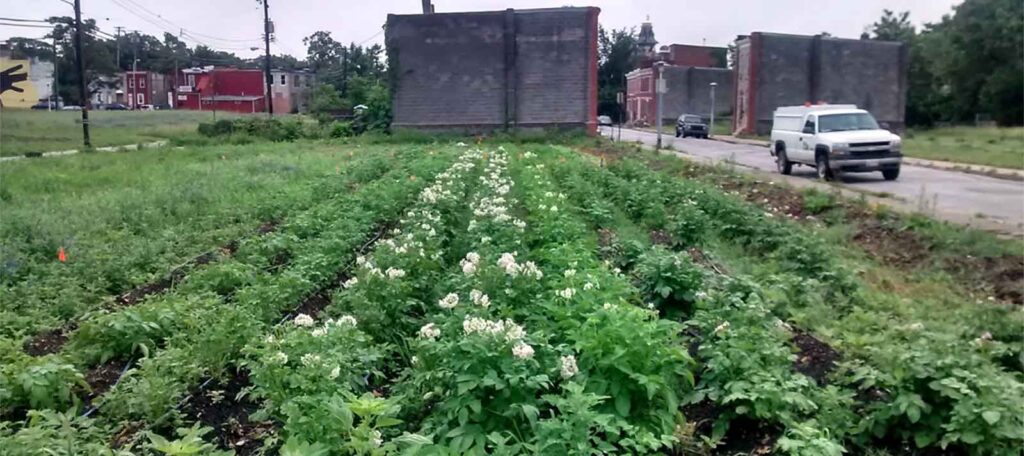Urban Farms: Providing Food and Protecting Watersheds
What if there was a way to reduce stormwater runoff as well as provide access to healthy food in low income urban areas?

What if there was a way to reduce stormwater runoff as well as provide access to healthy food in low income urban areas? What if this practice was being done in cities across the Nation?
Farms are not just for rural areas; the practice of urban agriculture is a growing trend in inner-city neighborhoods across the country to address the issues of food deserts and stormwater runoff. The impetus behind this trend is to provide healthy food to city residents as well as to reduce stormwater runoff. Using urban agriculture as a green stormwater infrastructure practice can reduce the amount of nutrients that flow into waterways and destroy their ecological health and the community benefits they provide.
Why We Need Stormwater Practices
Rain fall in urban areas picks up pollutants such as heavy metals, oil, and grease as it flows across impervious surfaces such as streets, parking lots, and roofs. Polluted runoff is a major source of water pollution in watersheds across the United States. Increased development and urbanization combined with expensive water infrastructure updates have communities across the country starting to incorporate innovative approaches to manage stormwater runoff, such as urban agriculture, which in turn will protect clean water and public health.
Urban Agriculture as a Green Infrastructure Practice
Green infrastructure is a water management system or practice that uses natural processes to infiltrate stormwater runoff on the site where the runoff is generated. Urban agriculture is a green infrastructure tool because it creates a pervious surface where an impervious surface once was and plants have a propensity to soak up rainwater.
Many urban areas have vacant and unused lots that serve no purpose to the city or surrounding neighborhood, and are typically made up of poor quality soils that are compacted due to years of development and are not conducive to water infiltration. Creating an urban farm in these lots reduces the amount of stormwater runoff due to the looser soil and the addition of plants.
Urban agriculture provides more benefits than green infrastructure does alone. Farms improve the local economy by creating jobs and increasing property values, improve nutritional health of underserved communities by giving local access to healthy food options, and connect residents to their environment by providing greenspace to enjoy. For these reasons, urban areas across the country should integrate agriculture into their cityscape.
Check out these links to learn more about urban agriculture:
- modernfarmer.com
- greenroofs.com
- greenroofs.org
- seedstock.com
- urbanfarmonline.com
- urbanfarming.org
- growingpower.org
- beginningfarmers.org/urban-farming



